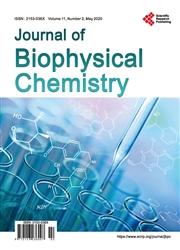Ultrafine Structure of Calcific Deposits Developed in Calcific Tendinopathy
引用次数: 0
Abstract
The ultrafine structure of tendons deposits formed in three patients, males aged 52 and 61 years and a female aged 71 years were evaluated by atomic force microscopy. Three distinctly different structures of deposit surface were identified: (i) compact, smooth and uneven surface composed of closely packed nanoparticles of diameter 30 nm; (ii) surfaces consisting of plate-like crystalline particles about 30 nm thick that formed larger entities divided by deep depressions; (iii) rough surface formed by individual or closely attached elongated needle-like particles with elliptical cross-section of diameter about 30 nm. These surface structures were developed by different formation mechanisms: (i) Aggregation of Posner’s clusters into nanoparticles formed on biological calcific able surfaces and in the bulk of body fluid surrounding the deposits that subsequently settled onto the deposit surface; (ii) Regular crystal growth on surface nuclei generated at low supersaturation of body fluid with respect to the phosphatic phase and/or in a narrow cavity containing a very limited volume of liquid; (iii) Solution mediated re-crystallization of the upper layers of a deposit or unstable crystalline growth governed by volume diffusion of building units to the particle tip. Small rods, 40 nm wide and from 100 to 300 nm long, with no apparent order were detected only on the surface of deposit formed in the female patient. These rods could be debris of collagen fibres that disintegrated into individual building units (macromolecules) with some showing breakdown into smaller fragments.钙化肌腱病中钙化沉积物的超微结构
本文应用原子力显微镜观察了3例男性52岁、61岁、女性71岁的肌腱沉积物的超微结构。沉积物表面结构有三种明显不同:(1)由直径为30 nm的纳米颗粒紧密堆积而成的致密、光滑和不均匀的表面;(ii)由厚约30纳米的板状晶体颗粒组成的表面,形成由深凹分隔的较大实体;(iii)由单个或紧密相连的细长针状颗粒形成的粗糙表面,其椭圆截面直径约为30 nm。这些表面结构是由不同的形成机制形成的:(i)波斯纳团簇聚集成纳米颗粒,在生物钙化表面和沉积物周围的大量体液中形成,随后沉积在沉积物表面;(二)在体液相对于磷酸盐相过饱和度较低时和/或在含有非常有限体积液体的狭窄腔内产生的表面核上有规律的晶体生长;(iii)由溶液介导的沉积物上层的再结晶,或由构建单元向颗粒尖端的体积扩散所控制的不稳定的晶体生长。仅在女性患者形成的沉积物表面检测到40 nm宽,100 - 300 nm长,无明显顺序的小杆状物。这些杆状物可能是胶原纤维的碎片,分解成单独的建筑单位(大分子),其中一些显示分解成更小的碎片。
本文章由计算机程序翻译,如有差异,请以英文原文为准。
求助全文
约1分钟内获得全文
求助全文

 求助内容:
求助内容: 应助结果提醒方式:
应助结果提醒方式:


